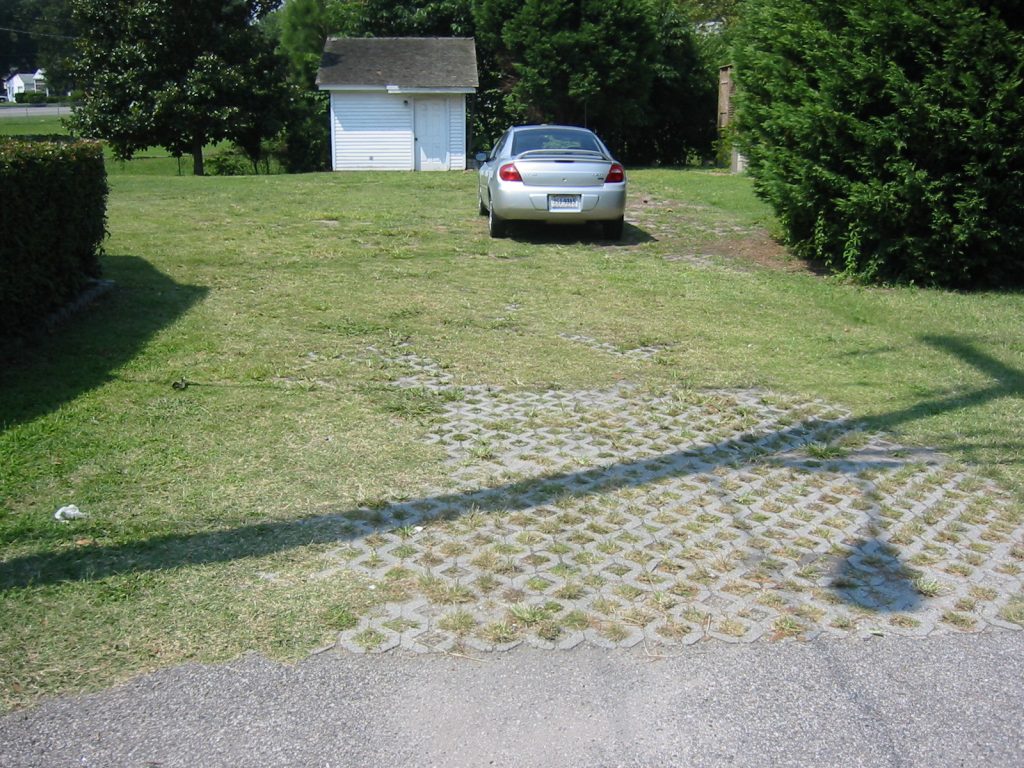Grass Driveways: Why, How to Build One
BY JAY KEATON | OCTOBER 15TH, 2019 | LANDSCAPINGForget the rules about not driving on the grass. One of the newest trends is a green driveway — where the grass and the hardscape work together to create erosion control, flood prevention, and landscaping harmony. In other words, it looks good, and it’s good for you. Here are some tips on how and when to build a grass driveway.
The Environmental Case for Grass Driveways
As cities and signs of human sprawl grow, so does the amount of impermeable cover, such as concrete parking lots and asphalt streets. That’s what’s causing more surface and stormwater pollution, putting a strain on the water table. As the city of Houston found out in 2017 when Hurricane Harvey hit, too many hardscapes cause widespread flooding.
The United States Geological Survey reports, “In a developed watershed, much more water arrives into a stream much more quickly, resulting in an increased likelihood of more frequent and more severe flooding. Frequent flooding causes problems for residents and also the local government, which has to clean up sand and sediment deposited after a flood.” The less impervious hardscape you have, the more places rain or flood water has to go before it reaches your home.
Pavement is also responsible for the urban heat island effect. If it feels like summer in cities are getting hotter, you can thank all the impermeable surface.
One solution at home could be a grass driveway.
Grass driveways are made with stormwater permeable pavers — essentially, pavers with holes where grass can grow through. Water runoff is absorbed into the grass and soil, not the streets and sewer system. It reduces the amount of impermeable cover around your home, making it more environmentally friendly, and lowers your risk of flooding.

In addition to the environmental reasons, homeowners considering expanding their buildings may have reason to consider a grass driveway. Many government agencies restrict the total amount of impervious cover on individual properties. For you to get that building permit to add on a master bedroom or a new patio, you may have to reduce your impervious footprint elsewhere on the property. Grass driveways represent one way to do so.
How to Create a DIY Grass Driveway
- Call the electric and water companies and make sure it’s safe to dig.
Make sure the topsoil isn’t frozen or very wet — late spring or early fall are usually good. - Dig about 6 inches down from street level.
- Compact the soil using a tamper.
- Lay down a couple of inches of crushed rock. Level, tamp down. Repeat.
- Lay down your grass pavers, making sure they lie at least 1 inch below ground level.
If using the high-tech plastic pavers, snap the honeycomb together. - Cover the pavers with loam — soil that mixes sand and clay.
- Lay sod on top of the loam, or plant grass seed. Keep it watered until the grass takes root.
Grass pavers, also known as grow-through pavers, will cost a little more than traditional driveway pavers.
There are plenty of advantages to using them. There are also some drawbacks.
Pros of a Grass Driveway
In addition to preventing flooding, erosion, and stormwater runoff, you’re surrounding your home with more greenery. The more green there is in your environment, the better it is for your mental health. It’s also aesthetically pleasing and looks much nicer than a traditional concrete driveway.
The plastic pavers are durable and can support the weight of several cars, so, yes you will have drivable grass. That’s why some businesses are now using the concept for their parking lots. The paving kits offer easy installation, and unlike a concrete driveway or patio, you don’t need to hire a landscape designer for the project.
Think of grass as a thousand tiny plants. They produce oxygen and absorb carbon dioxide. A 25-square-foot area of healthy lawn provides enough oxygen for one adult. The carbon dioxide these plants absorb helps reduce global warming.
Cons of a Grass Driveway
The major downside is the maintenance. Like your lawn, a grass driveway will need mowing, edging, weeding, watering, and fertilizing. If you don’t want to use your lawn mower on your driveway, you might consider a gravel driveway. Gravel offers some of the same permeable cover benefits, but not the environmental perks of a grass driveway.
The impact of our hardscaped world can’t be denied. Whether it’s a riverbank worn away by erosion, or groundwater that isn’t replenished and more severe flooding, stormwater causes lots of damage. One grass strip may not change the world, but it’s one step in the right direction — and it looks good, too.
Main image credit: “Driveway,” Jeremy Reding, CC-bySA-2.0